What inspired Havelock Wool?
I started Havelock Wool with another American who has a similar love for all things New Zealand. The farmers there were looking for new markets and uses for their wool, and the American market—which generates only 1% of the global annual yield of wool—is a great place to introduce this time-tested, high-quality natural product.
Is the insulation clothing-grade wool? Our friends in New Zealand think we’re using better wool than necessary to effectively insulate homes, but it carries a significantly higher fiber diameter than Merino wool and is more coarse. This means that it’s comfortable to the touch but not as soft as Merino wool, which is prized for its comfort.
Is the R-value comparable to other fibrous insulations?
Our batts perform the same as other batts— R-13 and R-19 in 2×4 and 2×6 walls, respec- tively. Our loose-fill product is made of little balls of wool that can be blown in, and it performs at R-15 and R-24 in cavities of the same depth.
“We will never replace mainstream insulation products, but we will address an increasing part of the market that chooses to make smarter and healthier decisions.
How can a product distributed half-way around the world be described as sustainable?
Our logistics costs are some of the cheapest in the world. Using a 200-ton press, we’re able to put 45,000 lb. of wool in a 20-ft. shipping container. By the time we prepare and ship our wool from New Zealand, we’re able to deliver a clean, consistent, reliable wool that costs less than what we could source from other parts of the world, including the United States. More to the point, our extremely low net embodied energy is derived from the simplicity of our manufacturing process. Wool requires none of the heat or energy required to make rock
wool, fiberglass, or cellulose. We are using 60-year-old repurposed carding machines with electric motors that were collecting dust in South Carolina after so many textile jobs moved offshore.
Is there a long history of wool being used as insulation?
There is. We know that using wool for insulating homes dates back hundreds of years in the United Kingdom and has been common in Australia and New Zea- land over the last 40 to 50 years. Wool has evolved over time to protect sheep from the elements, and it has been used for the same purpose by humans around the world for thousands of years.
What makes wool a so-called high- integrity fiber?
Wool inherently regulates temperature and moisture. Moisture works against most other types of insulation; thus, wool’s abil- ity to absorb and desorb moisture relative to the ambient air is a major advantage to our product’s longevity. Moreover, wool contains keratin, which means it will not support the growth of mold.
Is wool insulation expensive?
Prices vary by region and by buyer, but as you might expect, large installers buy at wholesale prices and smaller installers at retail prices. Speaking in averages, there is a general spectrum of insulation costs. Fiber- glass and cellulose are the least expensive, while closed-cell foam is the most expen- sive. We aim to be a bit less expensive than closed-cell foam, whose cost is anywhere from two to three times that of fiberglass.
Does the insulation contain any additives or binders?
We have no synthetic additives, glues, or binders. For an insect repellent and flame retardant, we use a very small amount of boric acid. We have not had any issues with moths or vermin, nor have our friends in New Zealand who have been using the product for decades. Also, the amino acids in wool bond with formaldehyde, nitrogen dioxide, and sulphur dioxide, naturally abating these contaminants.
Is there a low demand for wool?
The global demand for wool has declined over the last half century, due largely to the proliferation of synthetic fibers. Our point of view can be summarized by a favorite hashtag: #naturedoesitbetter. We will never replace mainstream insulation products, but we will continue to address an increas- ing part of the market that chooses to make smarter, healthier decisions. And there is plenty of wool to keep those folks happy.
